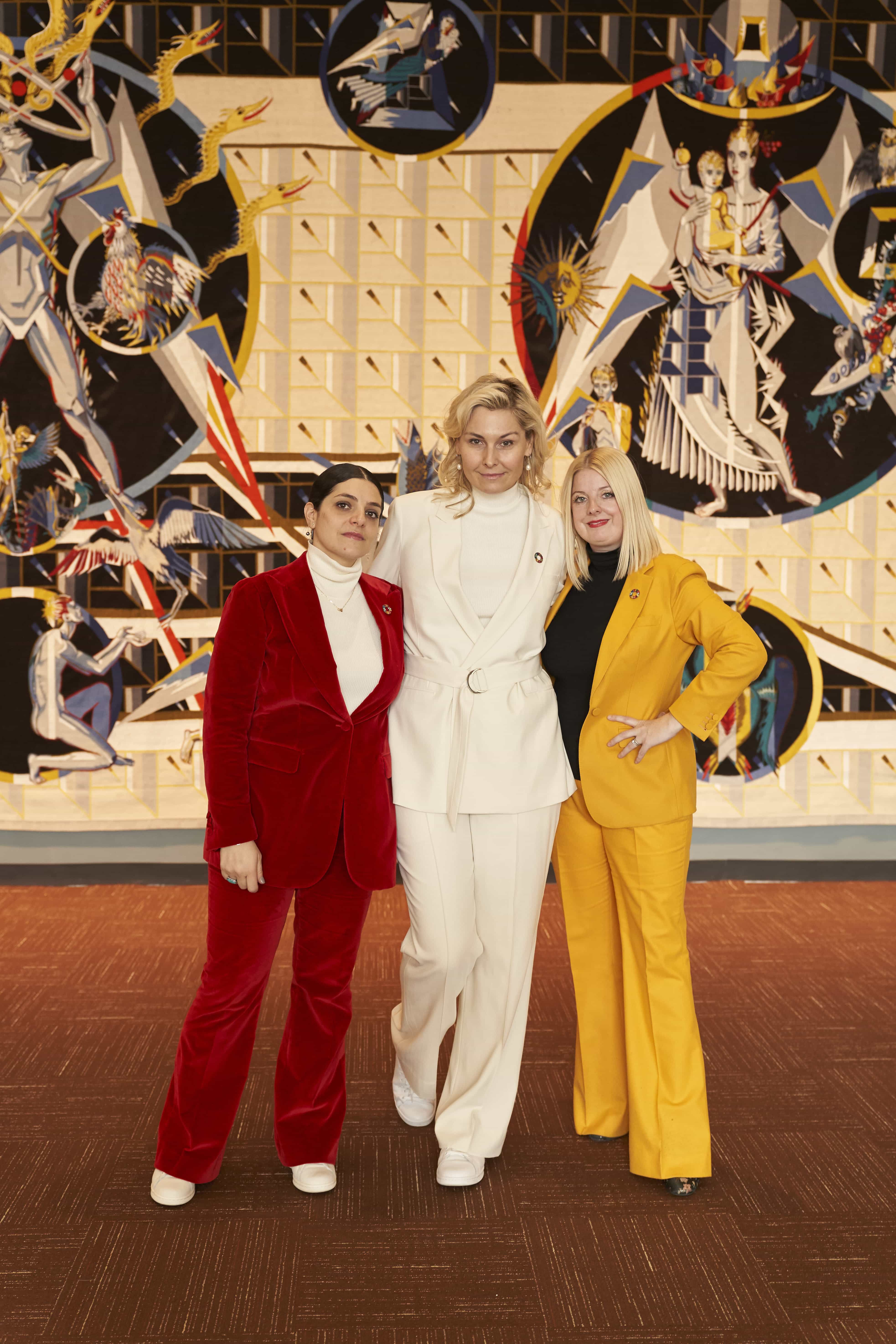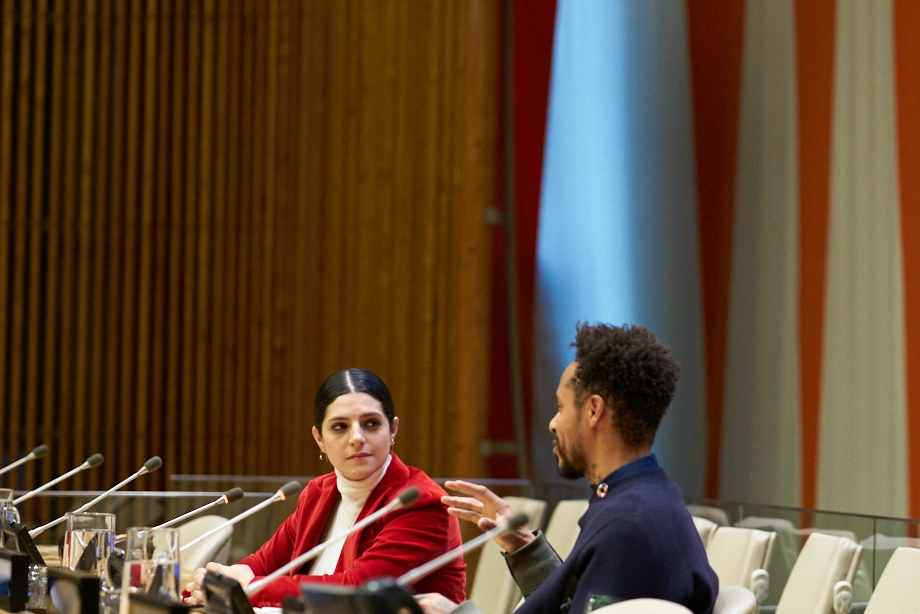In an era when most manufacturers are racing to make their processes more sustainable, apparel producers often seem slow to embrace reforms which might fundamentally “disrupt” the way clothing is made and repair their relationship to the environment.
Challenging the industry’s status quo though a mixture of design and dialogue, Céline Semaan is attempting to bring mainstream tech concepts like “open sourcing” and collaborative development into the fashion world. Her first related project, Slow Factory, was a sustainable clothing and accessories “design innovation lab”, and she recently launched two new resources—The Library and Study Hall conference series—to further explore the intersections between sustainability, technology, and human rights.
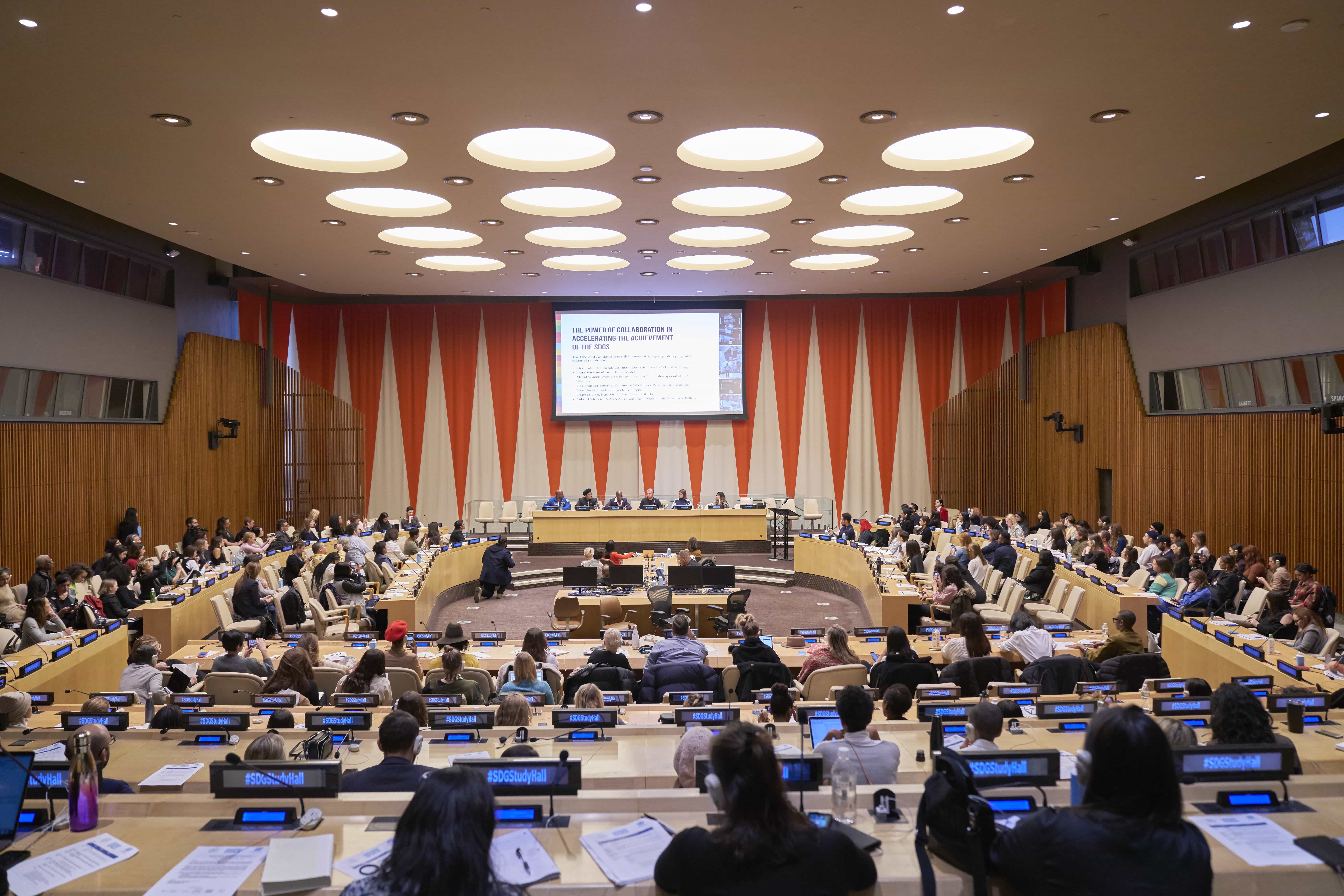
Study Hall at the UN, NYC 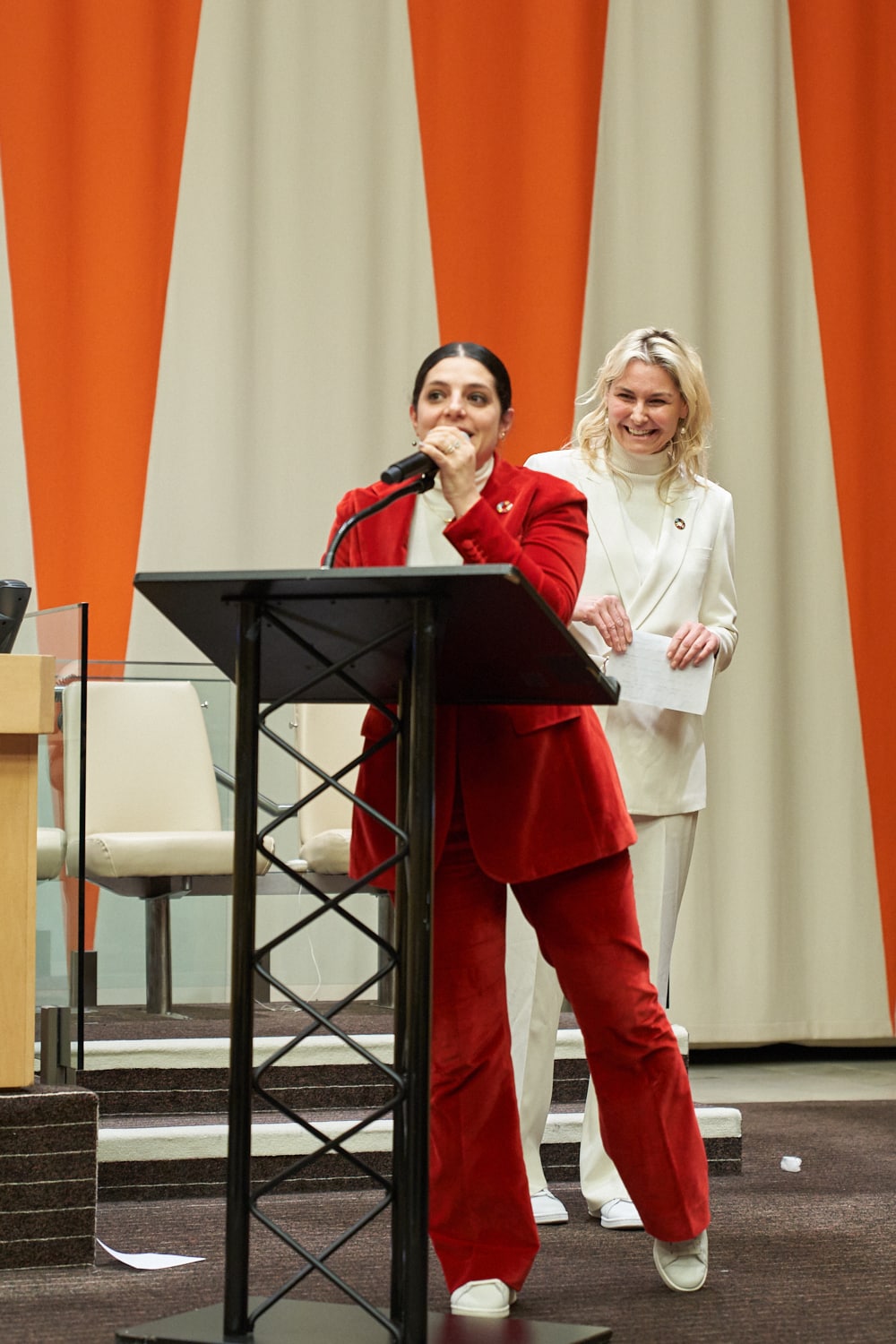
Study Hall at the UN, NYC 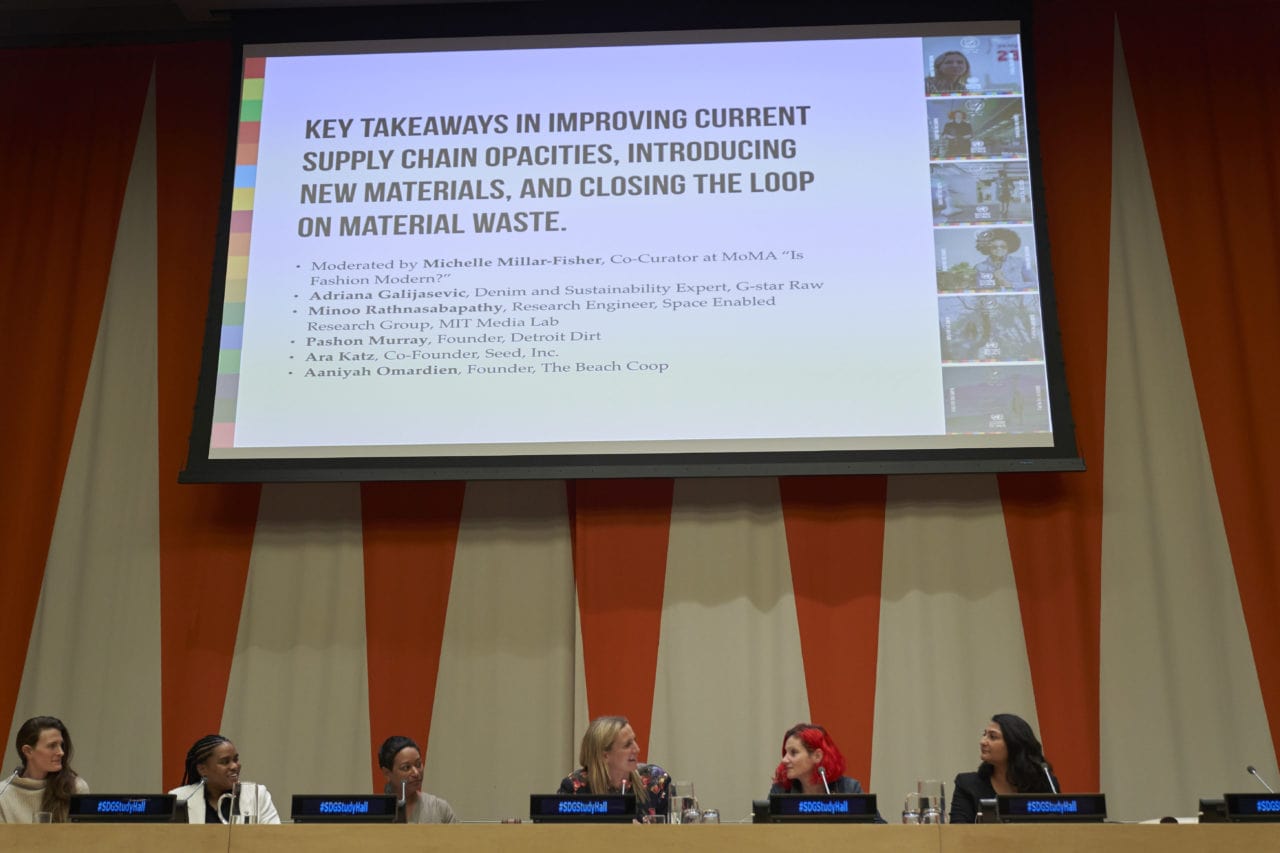
Study Hall at the UN, NYC 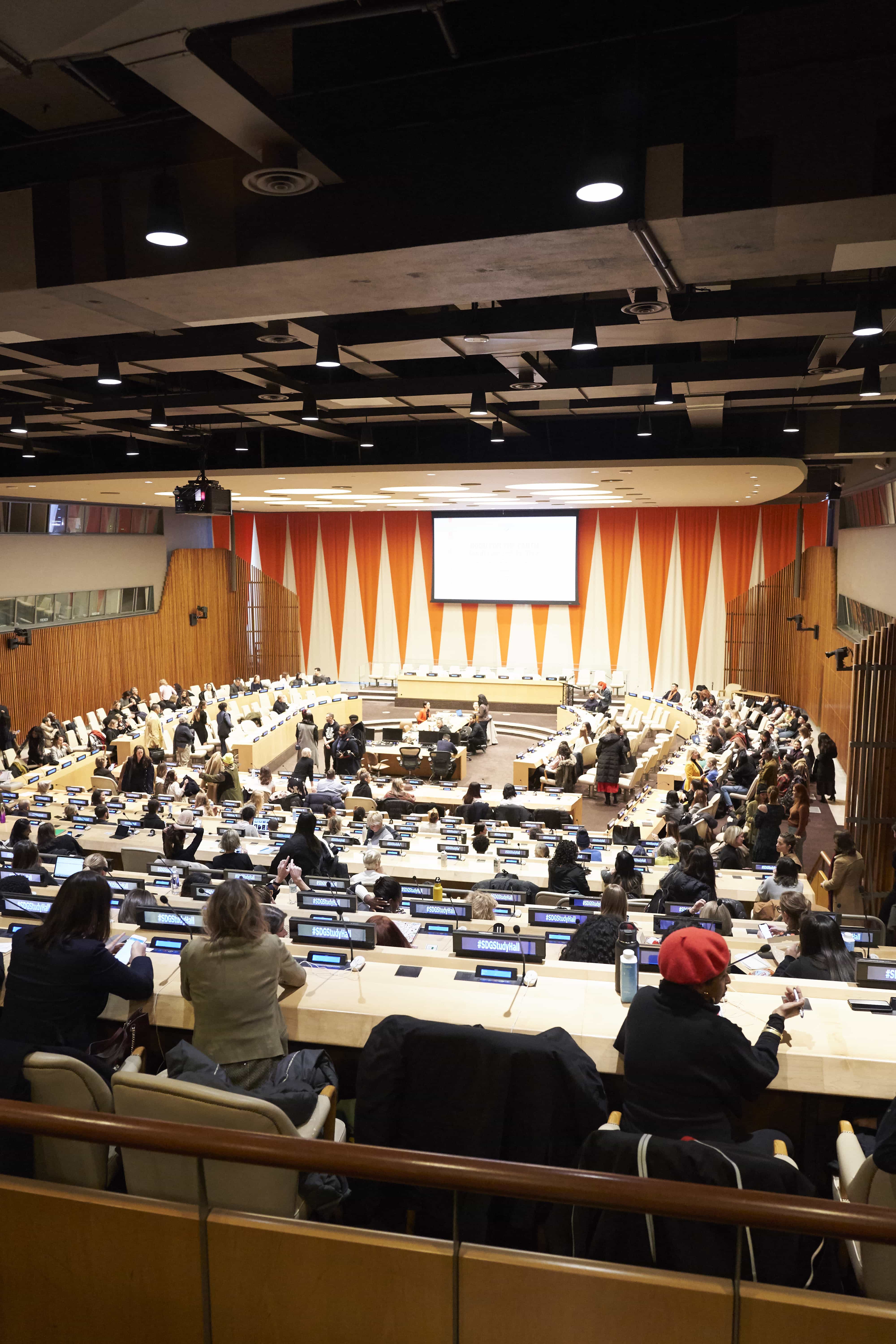
Study Hall at the UN, NYC 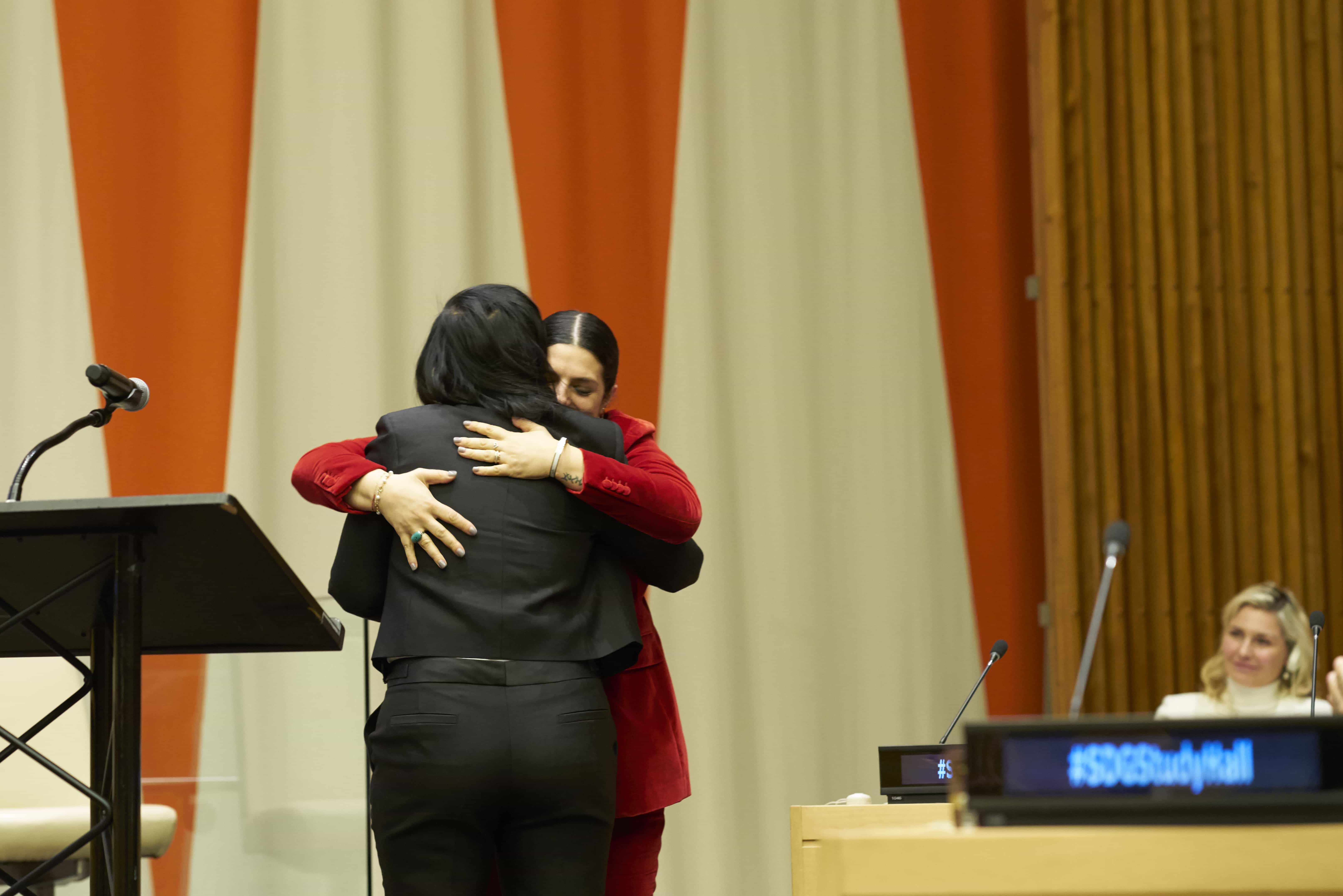
Study Hall at the UN, NYC 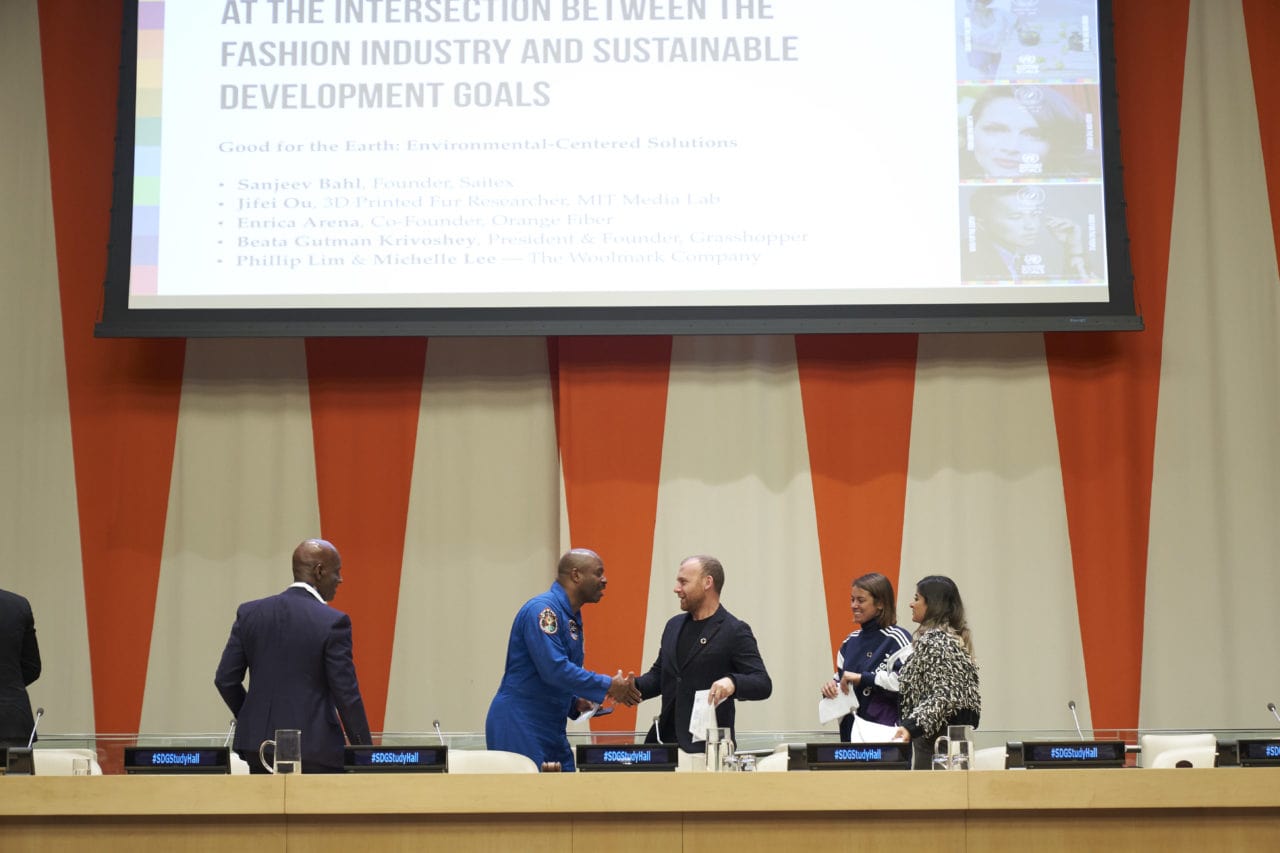
Study Hall at the UN, NYC 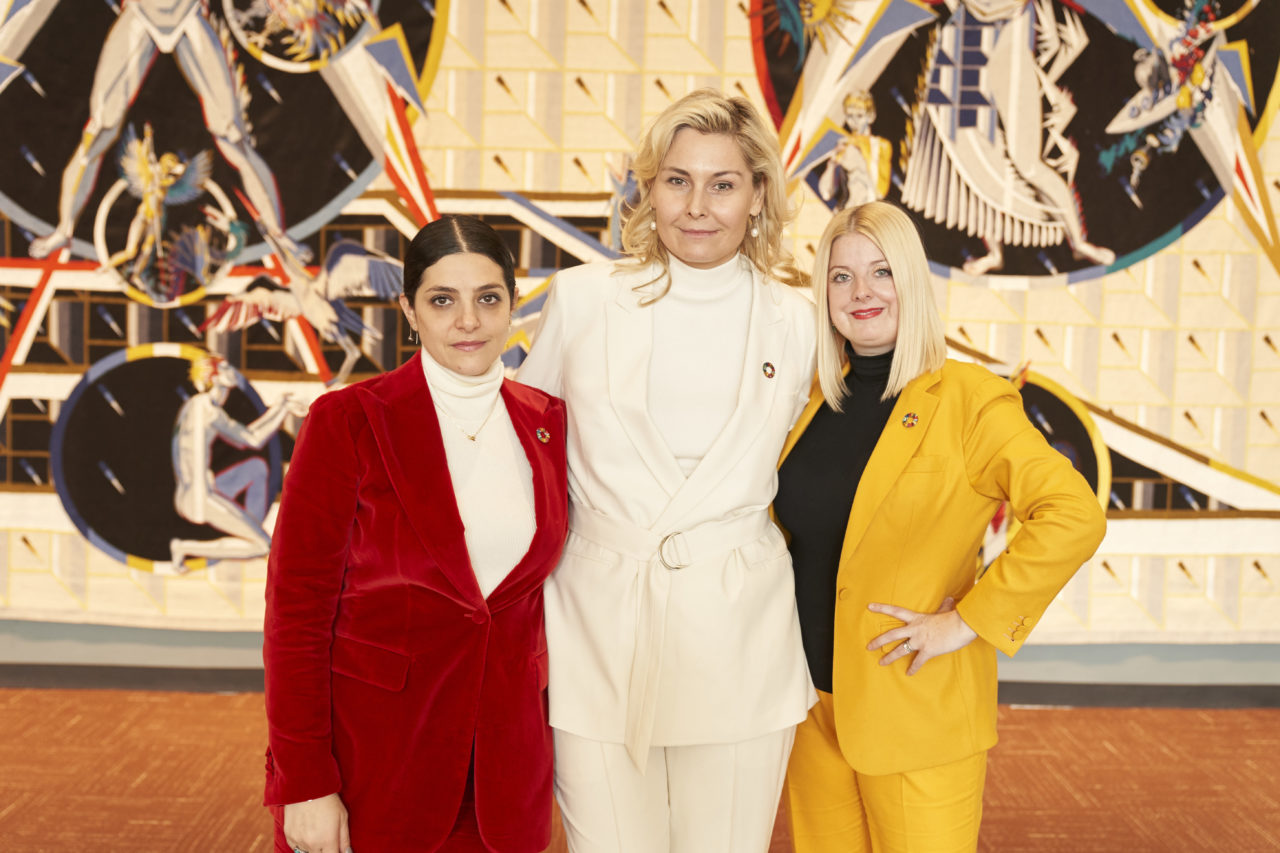
Celine, Lucie, Kerry at Study Hall at the UN, NYC
The most recent edition of Study Hall was held in New York City at the United Nations Sustainable Fashion Summit and featured presentations on collaboration, materials, and how the fashion industry can align itself with the UN’s Sustainable Development Goals. Ahead of the event, THE KINDCRAFT talked with Semaan to learn more about her work and what she hopes to accomplish.
THE KINDCRAFT
Tell us about your professional background.
Céline Semaan
Fifteen years ago, I studied arts—cyber arts—and very quickly started working in the digital space, working and making interfaces. At the time it was called “Interaction Design” and part of my learning was thanks to the Open Knowledge movement: “Open Source”, transparency in learning, online communities… Part of working in digital is that there’s a concept that when you upload a specific widget online—or whatever it is—you can recycle and reuse it. It’s not there to be used only once and die. In a sense, we [already] had that concept of circularity and a “renewable energy mentality”.
THE KINDCRAFT
Reusing ideas, reusing blocks of code…
Céline Semaan
Right! Reusing, building-upon, repurposing, “Everything is a Remix”, transparency—this is where I come from.
THE KINDCRAFT
Why do you think the fashion industry is reluctant to adopt what’s clearly been a very successful “open source” model in the technology sector?
Céline Semaan
Well…. Technology was young and figuring itself out. It wasn’t really established by any sort of colonial power or industry. It was very new—very “bottom up” and grassroots. Very much like, you know, hacker culture.
From Digital to Material
THE KINDCRAFT
How did you transition from interaction design into fashion?
Céline Semaan
I joined Creative Commons as a community lead from Montréal, but I also helped launch in Beirut and Qatar. I helped artists, writers—contributors of the online world—understand these licenses and use them properly. My work was so much about creating conferences and bringing people together. It was incredibly inspiring for me. Democratizing information—democratizing knowledge—is something I’m very passionate about.
When NASA joined Creative Commons, I started looking at all the banks of images that we suddenly had access to. And I tweeted [something like] “wouldn’t it be nice to wrap yourself with the universe and the world and stop killing each other?” People were like “Do it!” and [I thought] “If I’m printing images—holy images—honestly, like the Earth and the universe… I can’t be doing it against the environment and I don’t want to be hurting people in the process.”
And I had no idea what I was getting myself into.
I started talking to my peers that were in fashion and I started seeing how little information they were willing to share with me on where they manufacture and where they print. A friend of mine, Valérie Dumaine, is a pioneer in Montréal—a local designer creating collections that are beautiful but also sustainable. So I asked her “Where are you printing?” and she guided me to India.
That’s where my first collection came from and I met the people running the factory. I started with square scarves: I was very much inspired by Hermès and I was also thinking, like, “I don’t know anything about fashion, but I can make a square.“
THE KINDCRAFT
Coming from the world of interaction design, squares are everywhere–from the pixel level on up!
Céline Semaan
[LAUGHS] But the thing is this—my work is a square, OK. I work with square silk and the way you wrap… it creates meaning. Look at this square scarf. There’s nothing more neutral than a square scarf. But how you wrap it is indicative of a culture, it’s indicative of your religion, it’s indicative of your social background. So on and so forth. And so I was like “Wow—Fashion is political.”
A Slow Factory
THE KINDCRAFT
How did Slow Factory get started in 2013?
Céline Semaan
My partner and husband… we collect domain names for fun. I have, like, a $300 a year budget and keep them for no reason. We were looking at this [collection] and thought “What are we doing with all these names?” We had slowfactory.com in there… We thought it was clever: “Slow Factory — that’s so odd!”
I had just given birth to my first daughter. In Montréal, you have health insurance and, when you give birth, you have a year of paid leave for you and your partner. It’s beautiful… and so we took four months off to be with my family in Lebanon. That’s where the idea came together—I had time to think and I was, like, “I don’t want to go back to digital. I want to do something for me!” And I was thinking about that tweet and thought “It should be called ‘Slow Factory’ because people need to slow down. They need to look at the big picture.” I kept writing these words down [in my notebook], and I was like “I’m going to do it!“
THE KINDCRAFT
Who were your first customers? What was the reaction overall?
Céline Semaan
I think my first customers were people from the tech industry. I wasn’t part of any fashion community—some of my peers were working in fashion but, even then, they were super skeptical about my project. They were like “I don’t know… it’s weird, it’s tacky.”
So it wasn’t received very well in the beginning from fashion. And when I started trying to get press in fashion because, you know, that’s how it works—to get clicks, you need to get eyes on your things — I was faced with a lot of resistance from the fashion crowd. Like “What is this? This is like a geek trying to be a fashion person” or “Did you work at any fashion houses?” And I was, like, “Nope!” [SMILES]
I came from nowhere—so it took me a few years. The first publication that wrote about us was Scientific American… I’m very proud of that, actually. Fast Company also did a great piece. And I was feeling a bit like that kid in school who wants to be friends with the cool people, but they really think you’re stupid. That’s exactly how I felt entering the fashion world. I felt very insecure. “What the fuck do I know about fashion?“
Study Hall
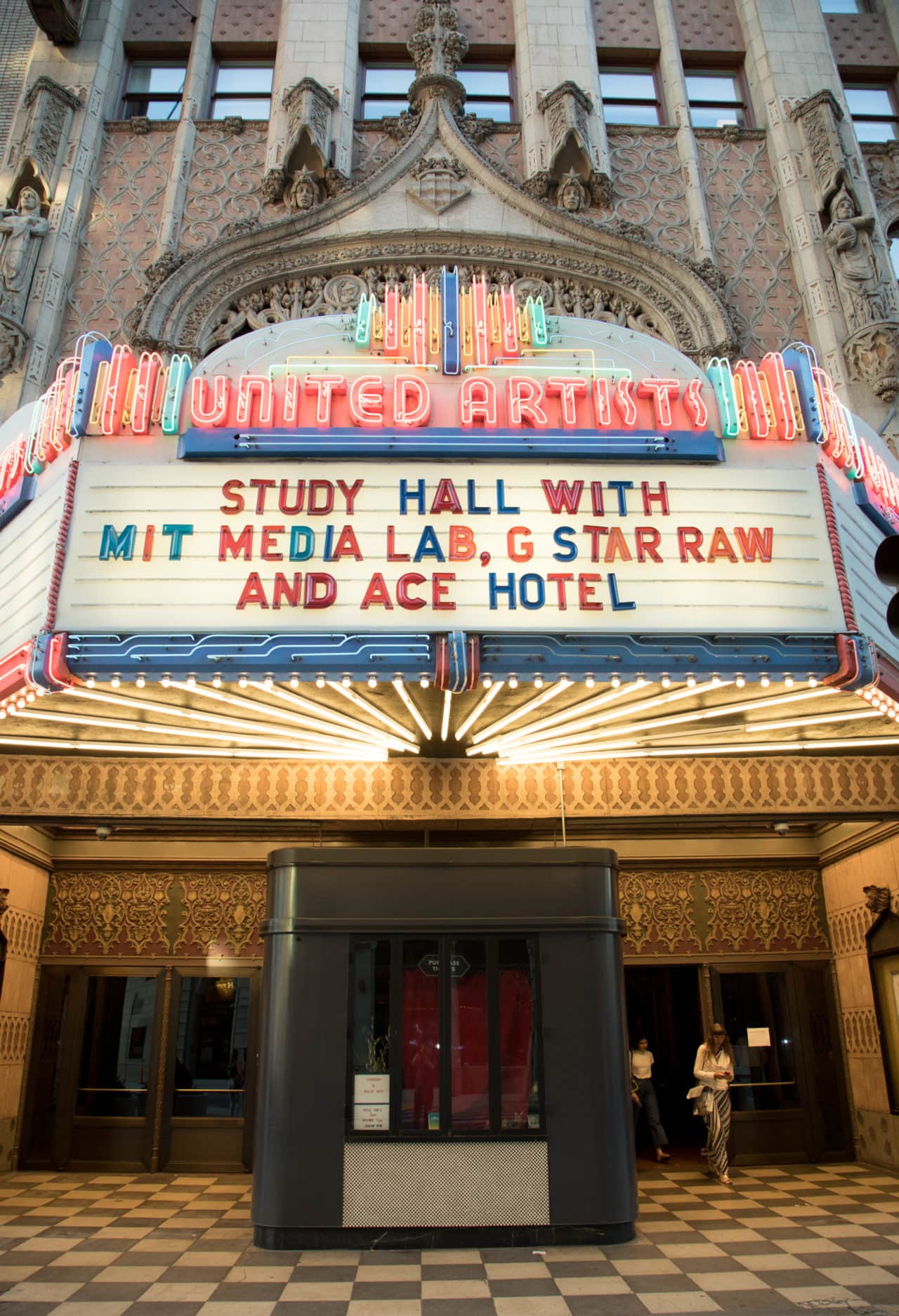
Slow Factory’s The Library Study Hall conference with MIT Media Lab and G-Star RAW held at the ACE Hotel August 26, 2018 in Los Angeles. 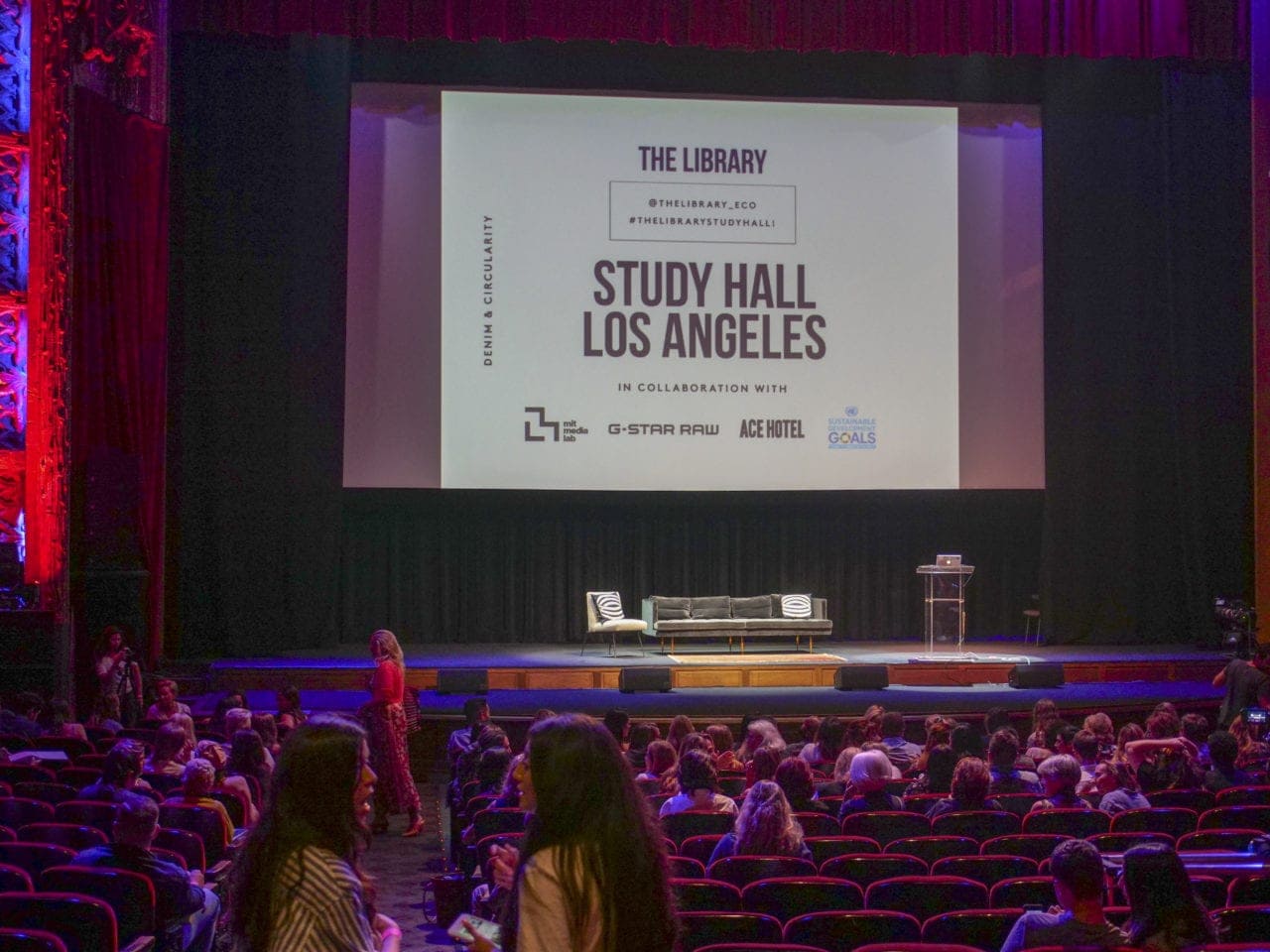
Study Hall, LA. Photo by Justin Lancy 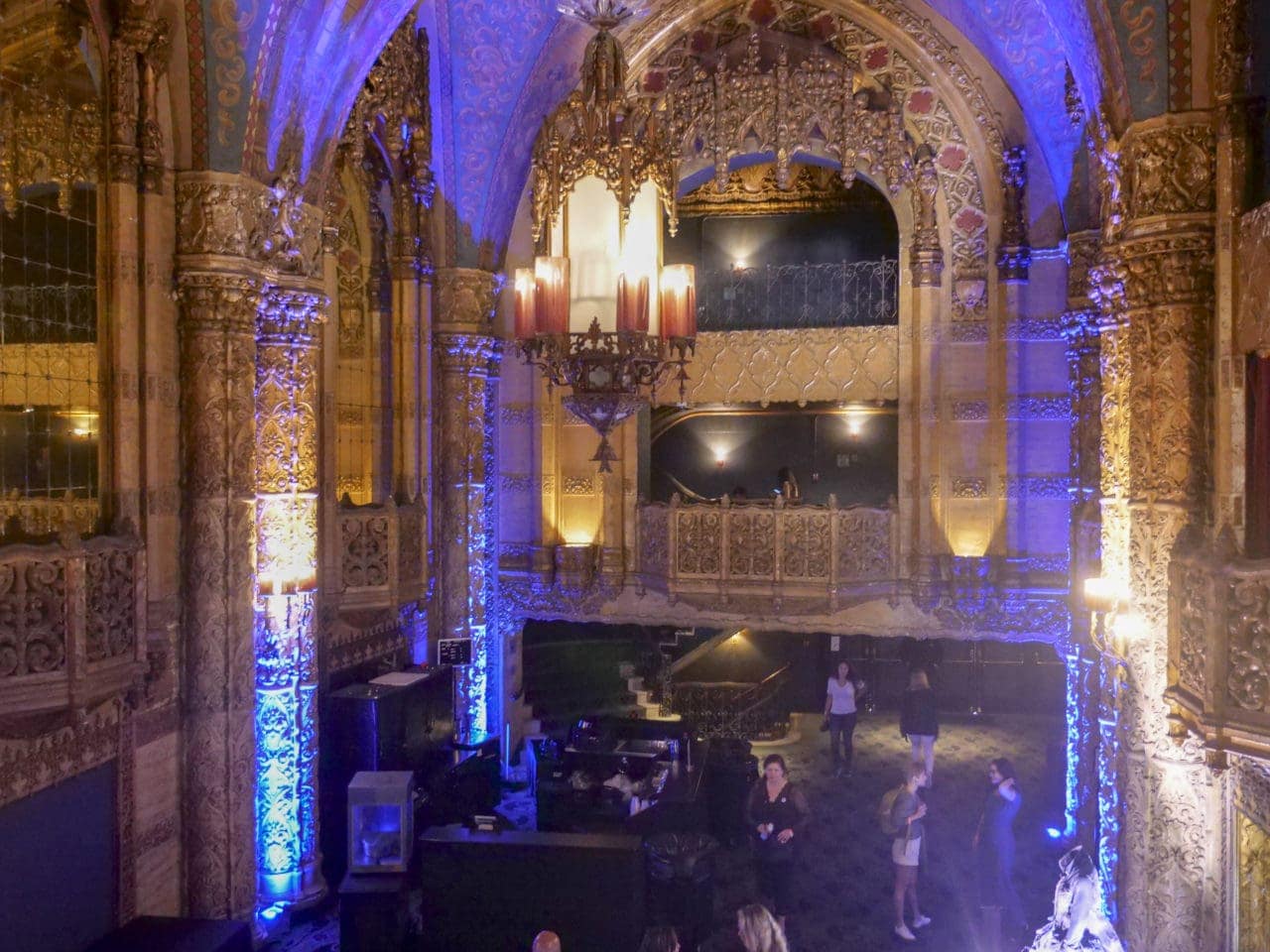
Study Hall, LA. Photo by Justin Lancy 
Slow Factory’s The Library Study Hall conference with MIT Media Lab and G-Star RAW held at the ACE Hotel August 26, 2018 in Los Angeles. 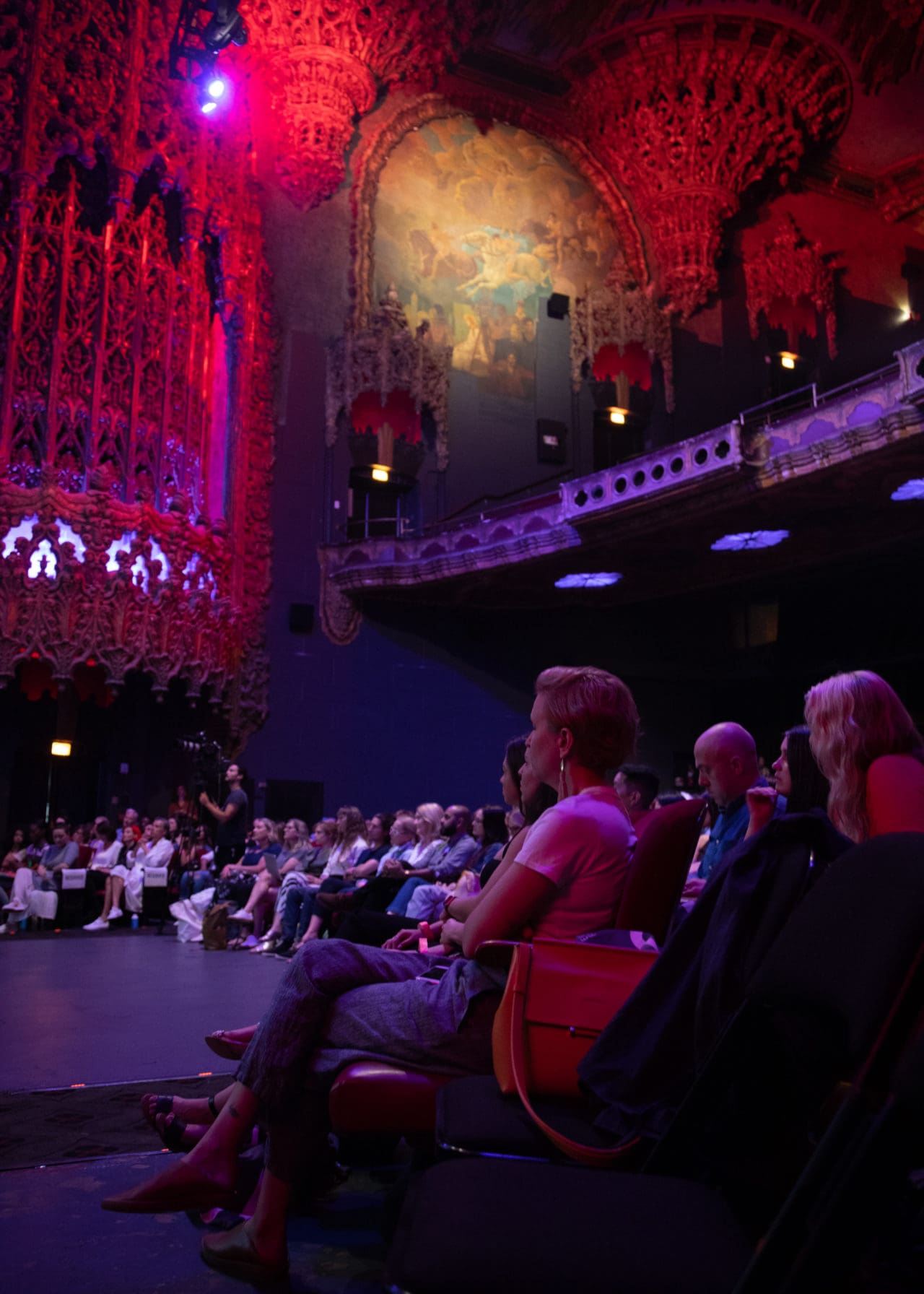
Slow Factory’s The Library Study Hall conference with MIT Media Lab and G-Star RAW held at the ACE Hotel August 26, 2018 in Los Angeles.
THE KINDCRAFT
How did you get from scarves to doing the Study Hall conference series?
Céline Semaan
Well, I thought, the [fashion] press doesn’t want to cover it and they don’t have the tools to cover what I’m doing. Maybe I need to write about what I’m doing in a way that’s informative, that creates a context around it. So I started writing about what I was doing.
I posted first on Medium, looking at the relationship between climate change and the refugee crisis. People covering the refugee crisis were like “Poor them…” and [I said] “No, it’s happening because of drought. It’s happening because of our consumption levels.” and I started writing about it. Then I pitched to Refinery 29 and I got to write there for a little bit and then I got into Teen Vogue. I started educating people.
But still the fashion world was not interested. And so I thought to myself: In the “open web” [community], we used to go to conferences. There are some conferences happening in the fashion space—but they’re extremely closed, elitist, and white. Maybe there’s room for a conference for people who are in fashion but feel disconnected from whatever culture that fashion is trying to impose on people? Maybe there’s room to create an open education platform? It’s very much inspired by my fellowship at MIT Media Lab.
THE KINDCRAFT
Tell us about that fellowship.
Céline Semaan
MIT Media Lab is part of the university and its ethos is about blurring the boundaries between disciplines, really bringing people together who would never be—the example they use most is “an artist and an engineer”—and bringing the right and the left [brain] together.
The fellowship gave me access to the lab and to the researchers and scientists. There are lots of events we were a part of and I also ran workshops there. What I was hearing the most is “We want something that brings MIT Media Lab outside the lab..” and I was, like, “I can help doing that! I want to bring MIT Media Lab to the fashion industry, actually.” And that’s what Study Hall is all about.
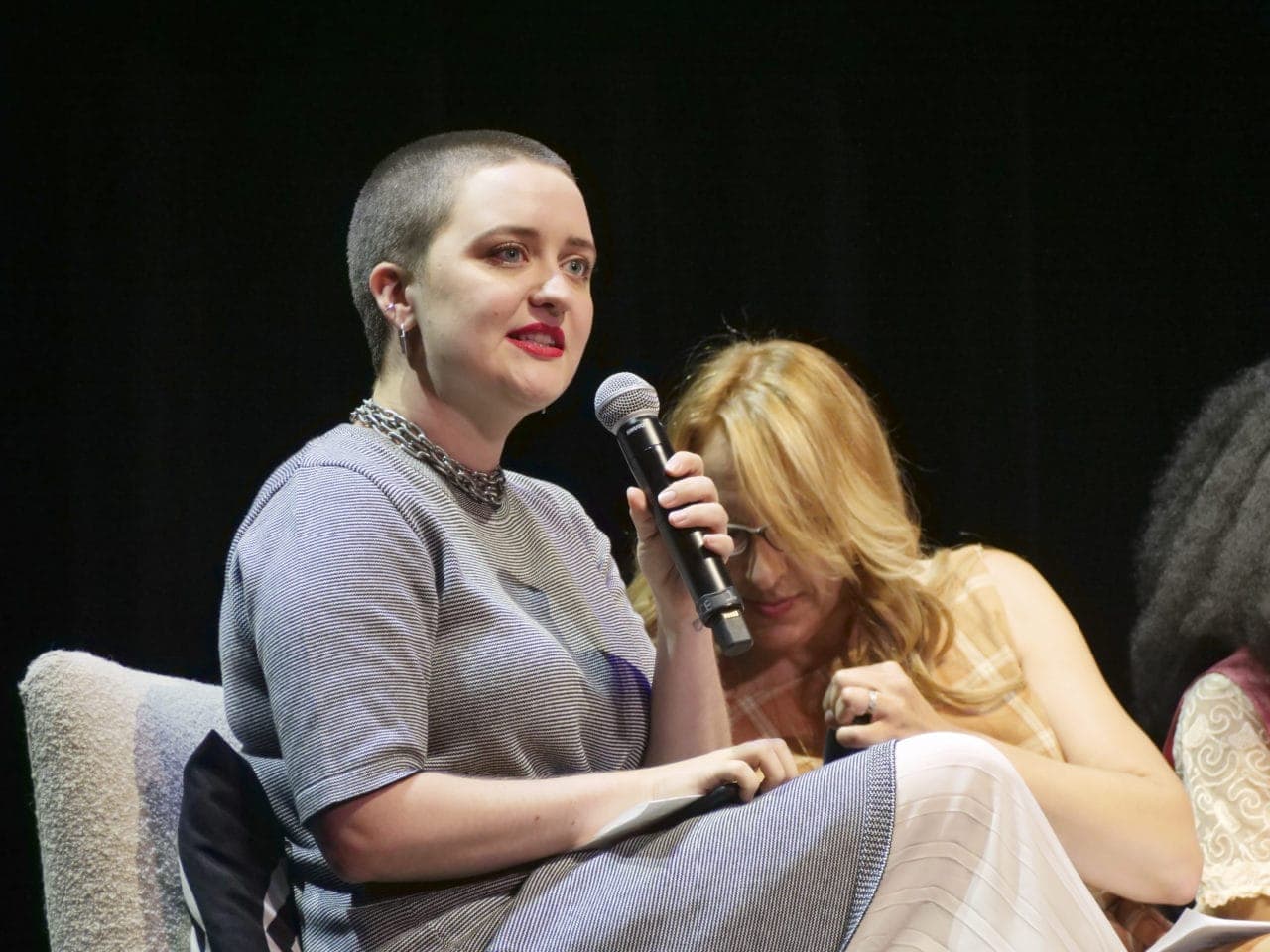
Study Hall, LA. Photo by Justin Lancy 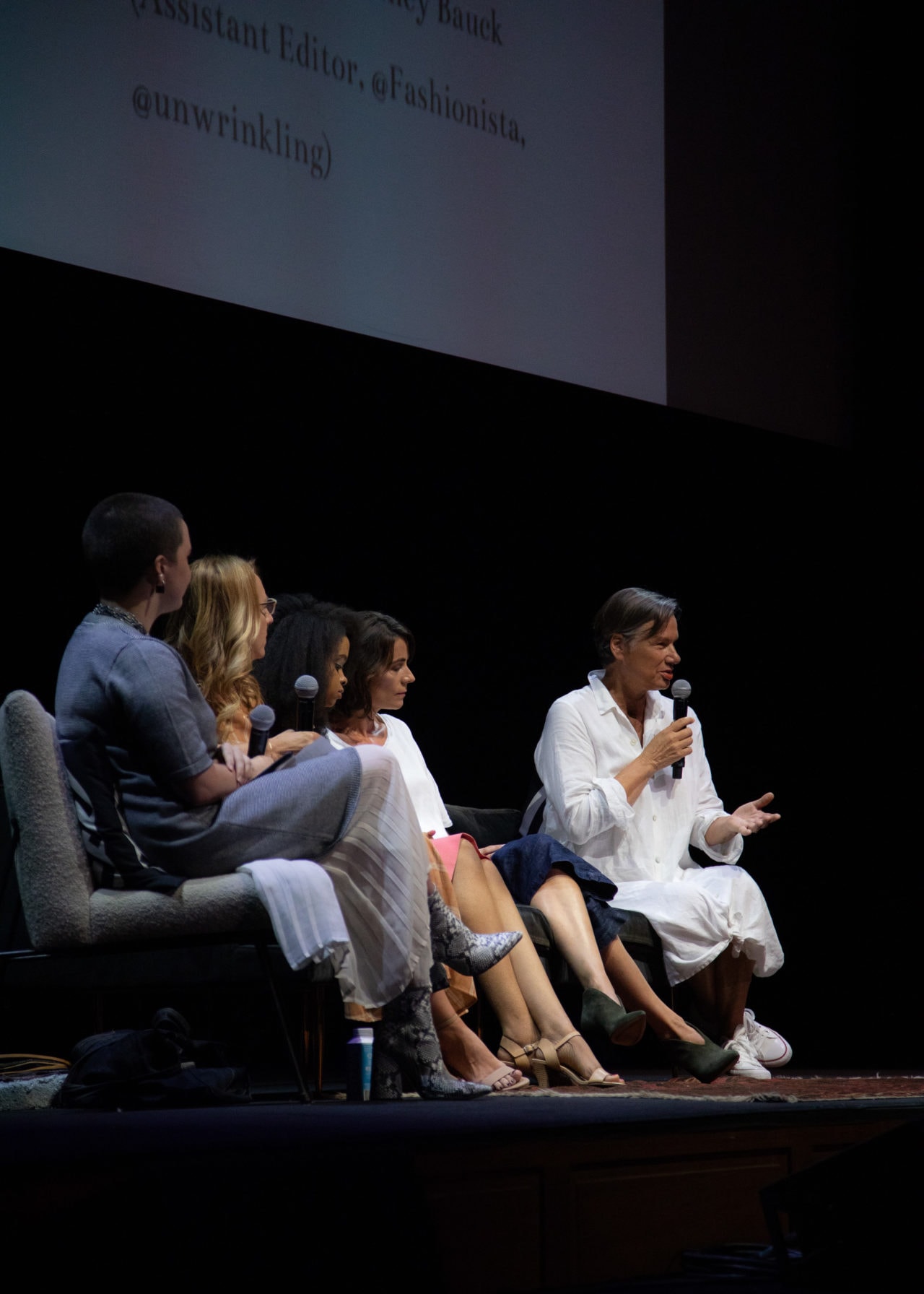
Slow Factory’s The Library Study Hall conference with MIT Media Lab and G-Star RAW held at the ACE Hotel August 26, 2018 in Los Angeles.
THE KINDCRAFT
It’s so interesting that you’re applying the MIT Media Lab ethos to sustainable fashion. What happens when you get those people from different disciplines in the same room?
Céline Semaan
Honestly… magic. Magic happens from collaboration. Magic happens from getting out of your silo, getting out of your perspective and into someone else’s perspective. There’s so much richness in intersectionality—whether it’s ethnic or it’s from different disciplines. There’s so much to gain from a broader perspective. Collaboration is “building upon”–like the idea of the Internet, itself. That’s how we move forward as people.
THE KINDCRAFT
So many social problems intersect with fashion. Where should we start fixing things?
Céline Semaan
The way I can make sense of it is looking at what’s good for the earth and good for the people: You can’t be doing everything at the same time so, in [assessing] our impact, I’d like to encourage people to start looking at this as a balance. You don’t need to 10 things in each category. You can do one and then add another. It’s incremental—that’s what’s important. It’s not necessarily all or nothing. Let’s have some structure and then let’s be incremental about it. That’s my approach to it, personally.
THE KINDCRAFT
What’s your advice for conscious consumers who hear conflicting sustainability information—or that their choices don’t matter?
Céline Semaan
My advice is to understand that there isn’t one solution that will restore this “feel good” feeling when it comes to consuming—consumption in itself is problematic. We have to be at ease with uncertainty and understand that we are here now because of an overconsumption available only to certain countries and at the expense of the developing world.
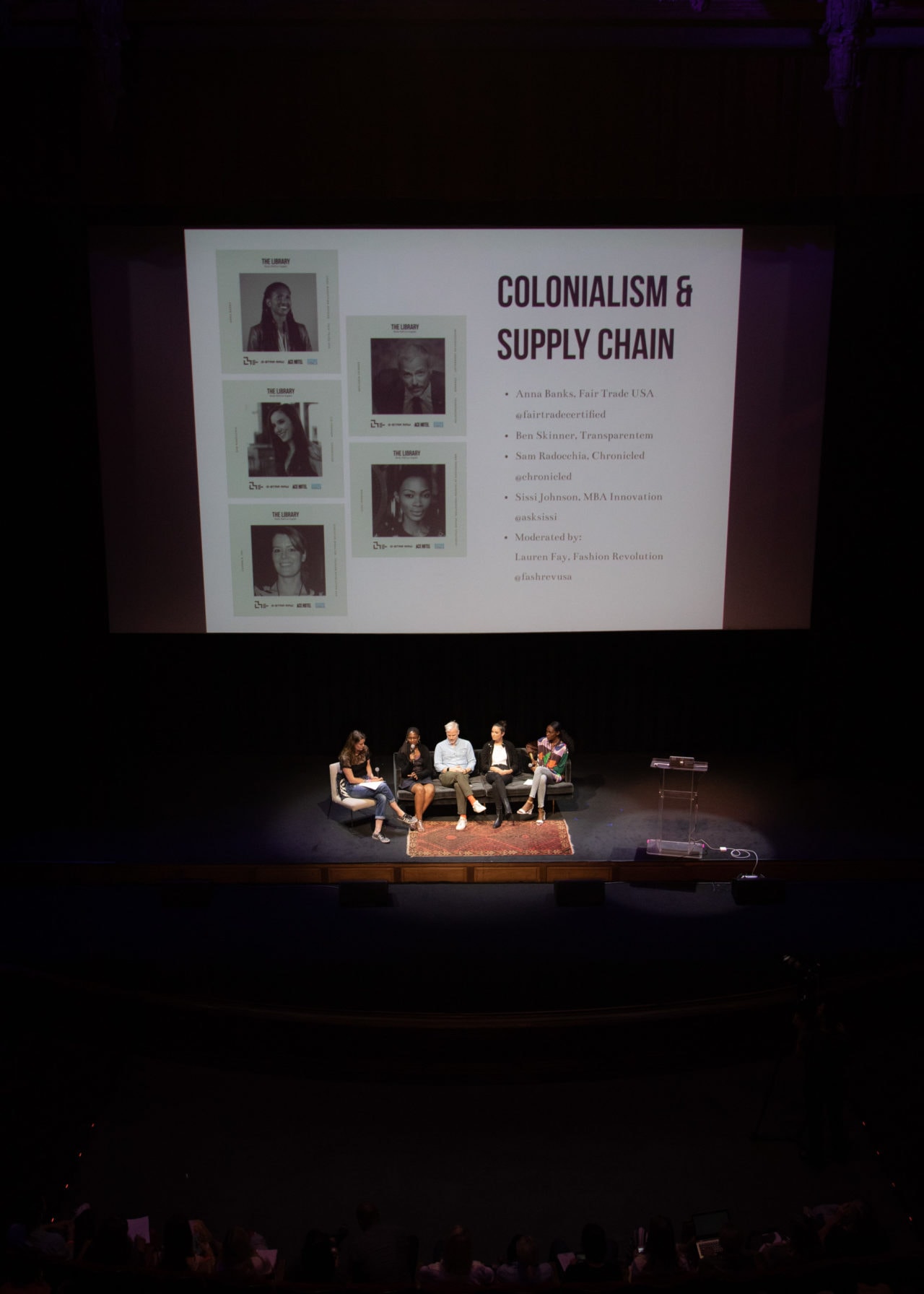
Slow Factory’s The Library Study Hall conference with MIT Media Lab and G-Star RAW held at the ACE Hotel August 26, 2018 in Los Angeles. 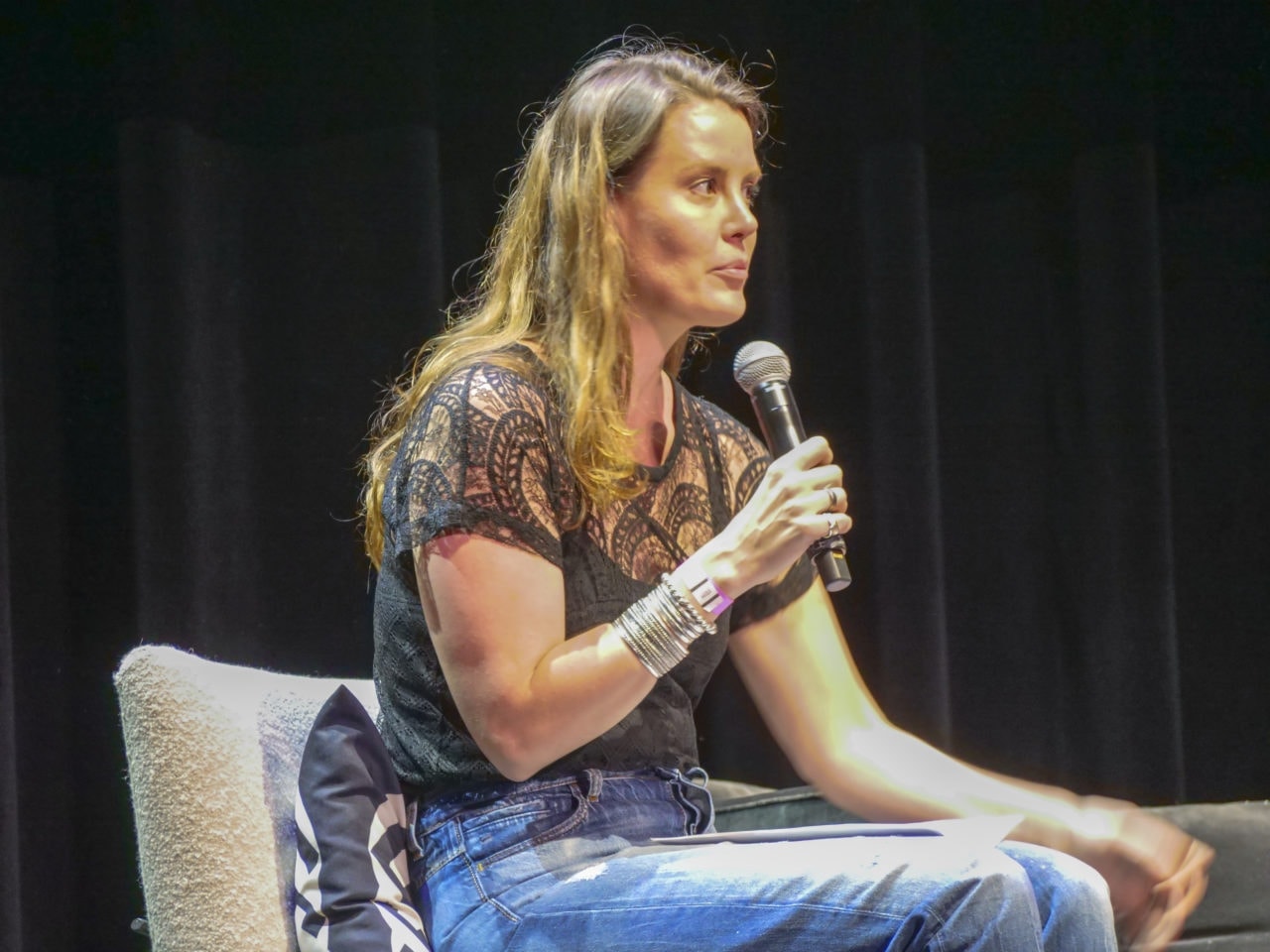
Study Hall, LA. Photo by Justin Lancy 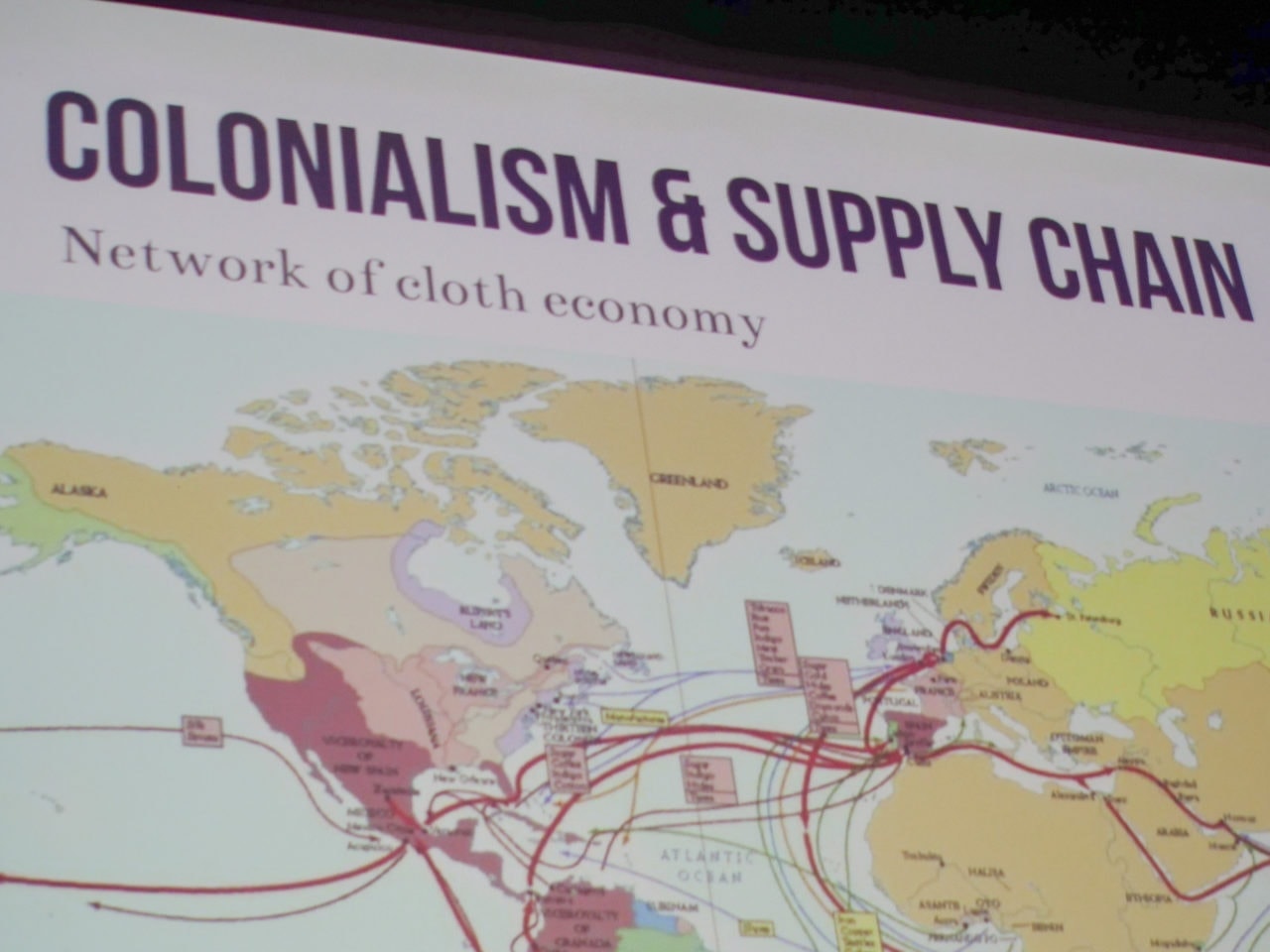
Study Hall, LA. Photo by Justin Lancy 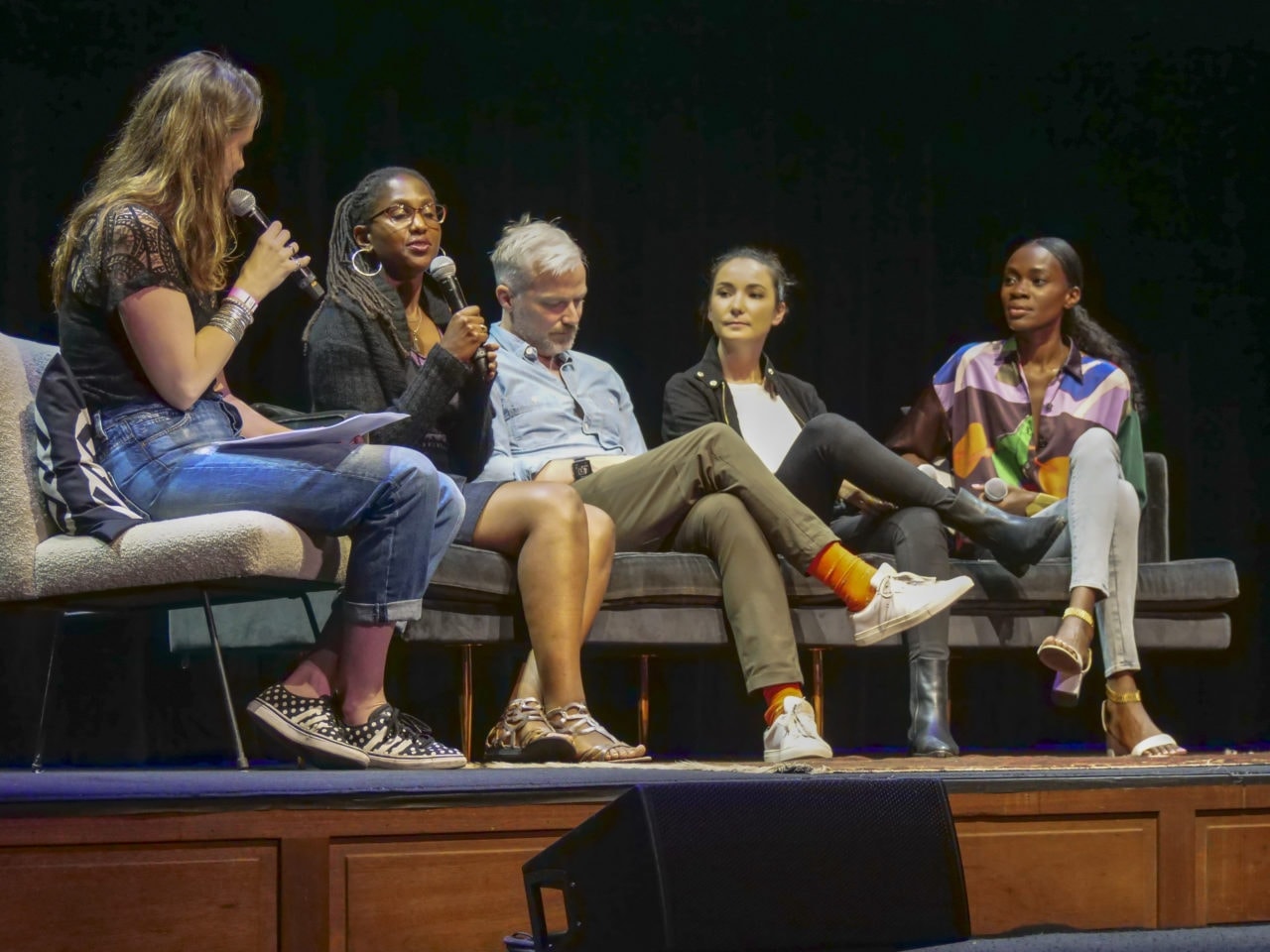
Study Hall, LA. Photo by Justin Lancy
THE KINDCRAFT
We liked that you put a look at colonialism at the top of Study Hall LA.
Céline Semaan
My Study Halls come from a post-colonial perspective: I come from Lebanon and we’ve been colonized by every single nation…. we’ve been colonized before America was found. So the idea of that colonization — we get it, you know — and we talk about it in a way that’s very open. In fact, the writer who coined the term “post-colonialism” is Edward Said [who is of Lebanese decent].
The idea of colonialism started with the idea that we want to ‘civilize’ other peoples and use them to our own benefit. To exploit them. Wade Davis is an anthropologist who wrote ‘The Wayfinders’—a book that very much inspired me in my career. He says that [different cultures] are equally evolved: Some are more evolved in ancient medicine practices, some are evolved in more logical perspectives… and so on and so forth. But we should coexist to be able to make sense of it all.
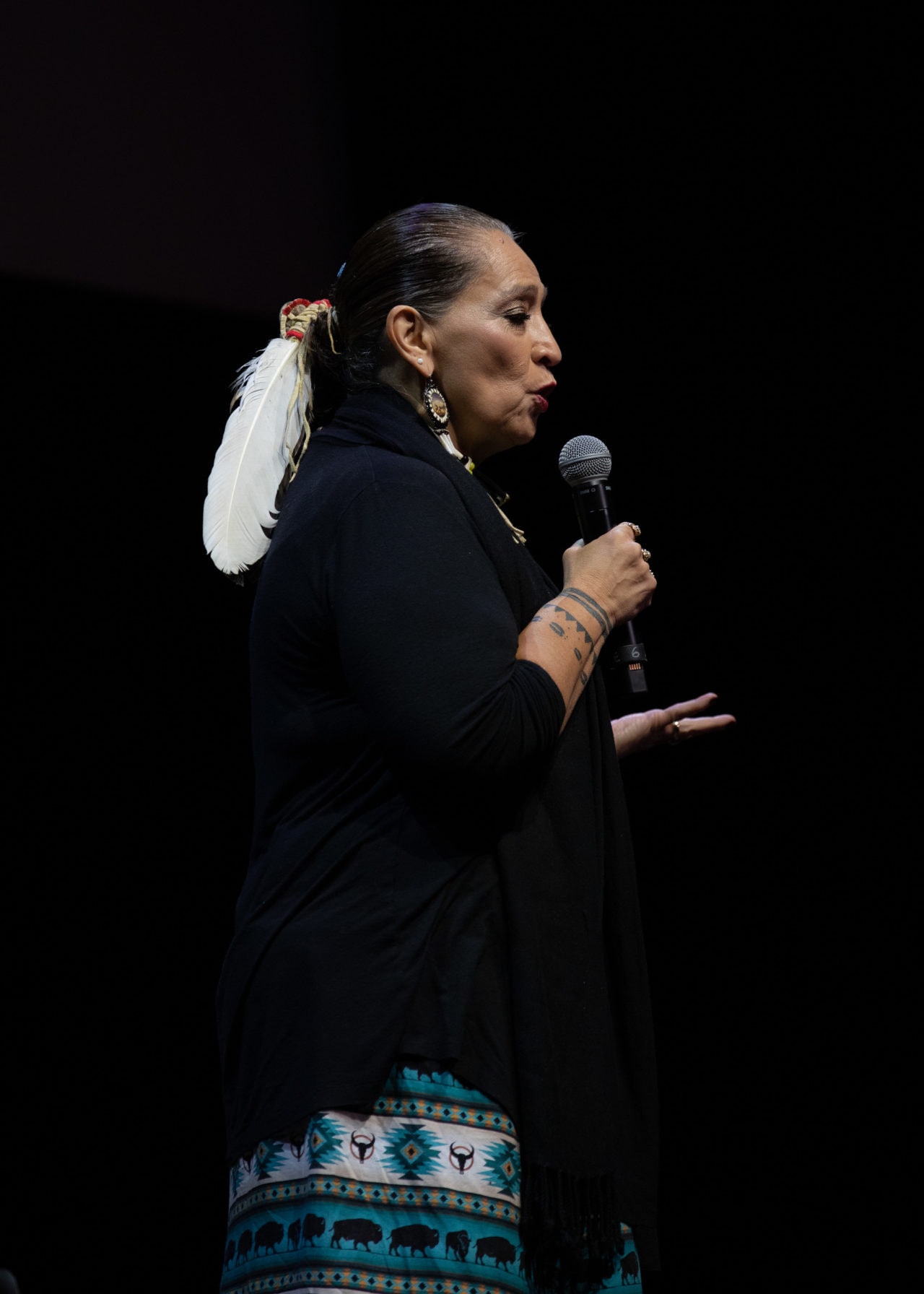
Slow Factory’s The Library Study Hall conference with MIT Media Lab and G-Star RAW held at the ACE Hotel August 26, 2018 in Los Angeles. 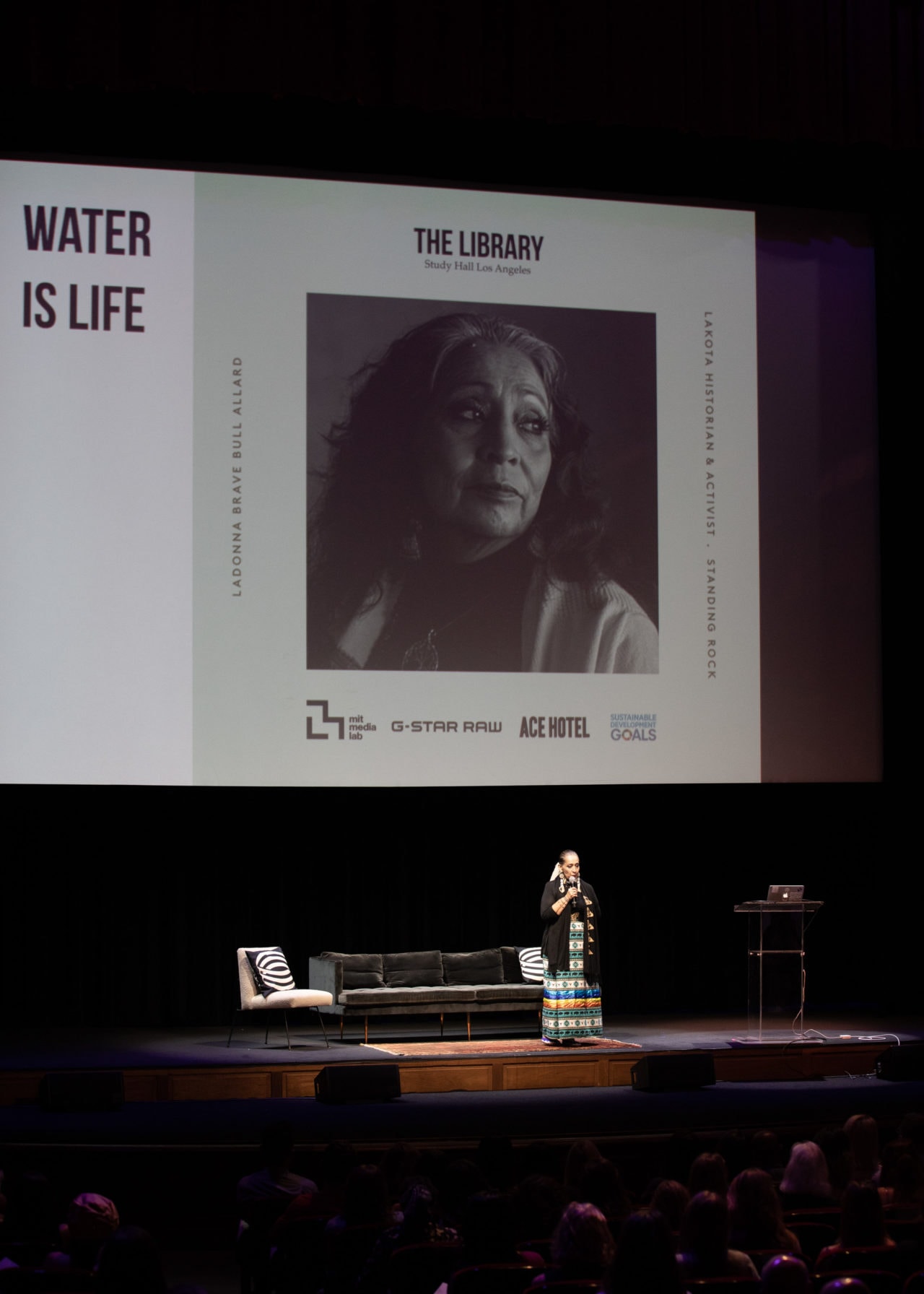
Slow Factory’s The Library Study Hall conference with MIT Media Lab and G-Star RAW held at the ACE Hotel August 26, 2018 in Los Angeles.
THE KINDCRAFT
Is this idea why you decided to ask Ladonna Brave Bull Allard to open the Study Hall LA conference?
Céline Semaan
I met Ladonna Brave Bull Allard two years ago at the Defiance Conference where she received the Disobedience Award for her work and activism at Standing Rock. She gave a speech there along with one of her co-founders Phyllis Young and it made everyone in the room, including the big wigs at the MIT Media Lab, cry actual tears. I fell in love with her, and spent most of the conference with her and Phyllis .
For Study Hall LA, the idea was around the four elements related to denim, we created this short film to illustrate our point of view and invited Ladonna to speak from her heart and open our conference with “Water is Life”, tying all of the themes together with wisdom.
THE KINDCRAFT
What are your plans for Study Hall and The Library?
Céline Semaan
I would love for it to be a platform. I would love to be able to successfully fundraise—to raise money to be able to continue building it and growing it.
THE KINDCRAFT
Did you bootstrap this yourself?
Céline Semaan
Slow Factory is completely bootstrapped by my own investment—friends and family. Study Hall was made possible… of course, I worked for free—but the first one was made possible with MIT sponsoring it. And the second one was also MIT Media Lab and G-Star Raw who made it possible. But even then, it [cost] way more than what we were able to raise. I had to take on that loss—so then I think to myself “I want to keep on doing this, but it needs to make sense financially because otherwise it’s not sustainable.”
THE KINDCRAFT
I think that “financial sustainability” is often missing in the discussion of “sustainable fashion”.
Céline Semaan
Exactly.
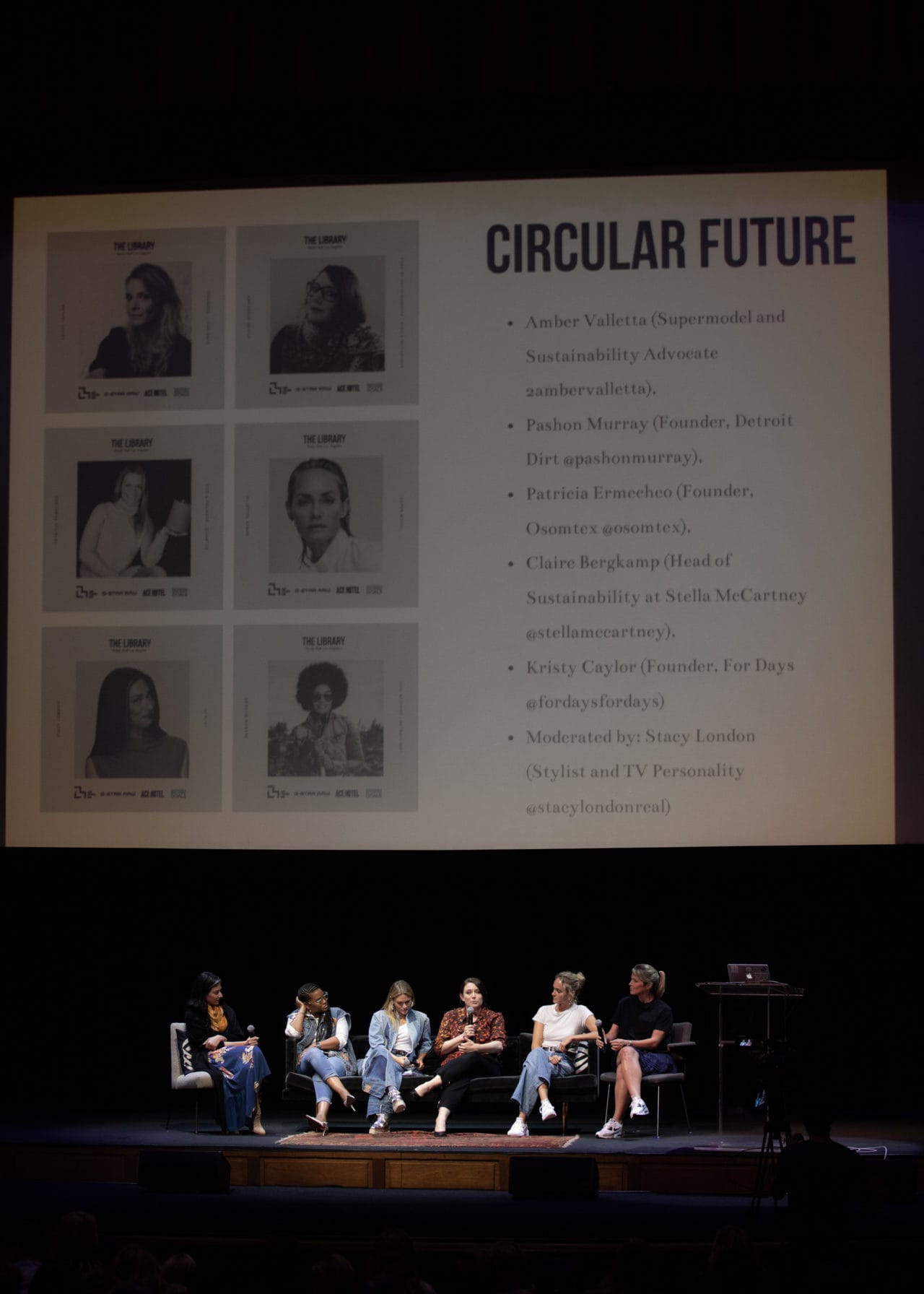
Slow Factory’s The Library Study Hall conference with MIT Media Lab and G-Star RAW held at the ACE Hotel August 26, 2018 in Los Angeles. 
Slow Factory’s The Library Study Hall conference with MIT Media Lab and G-Star RAW held at the ACE Hotel August 26, 2018 in Los Angeles. 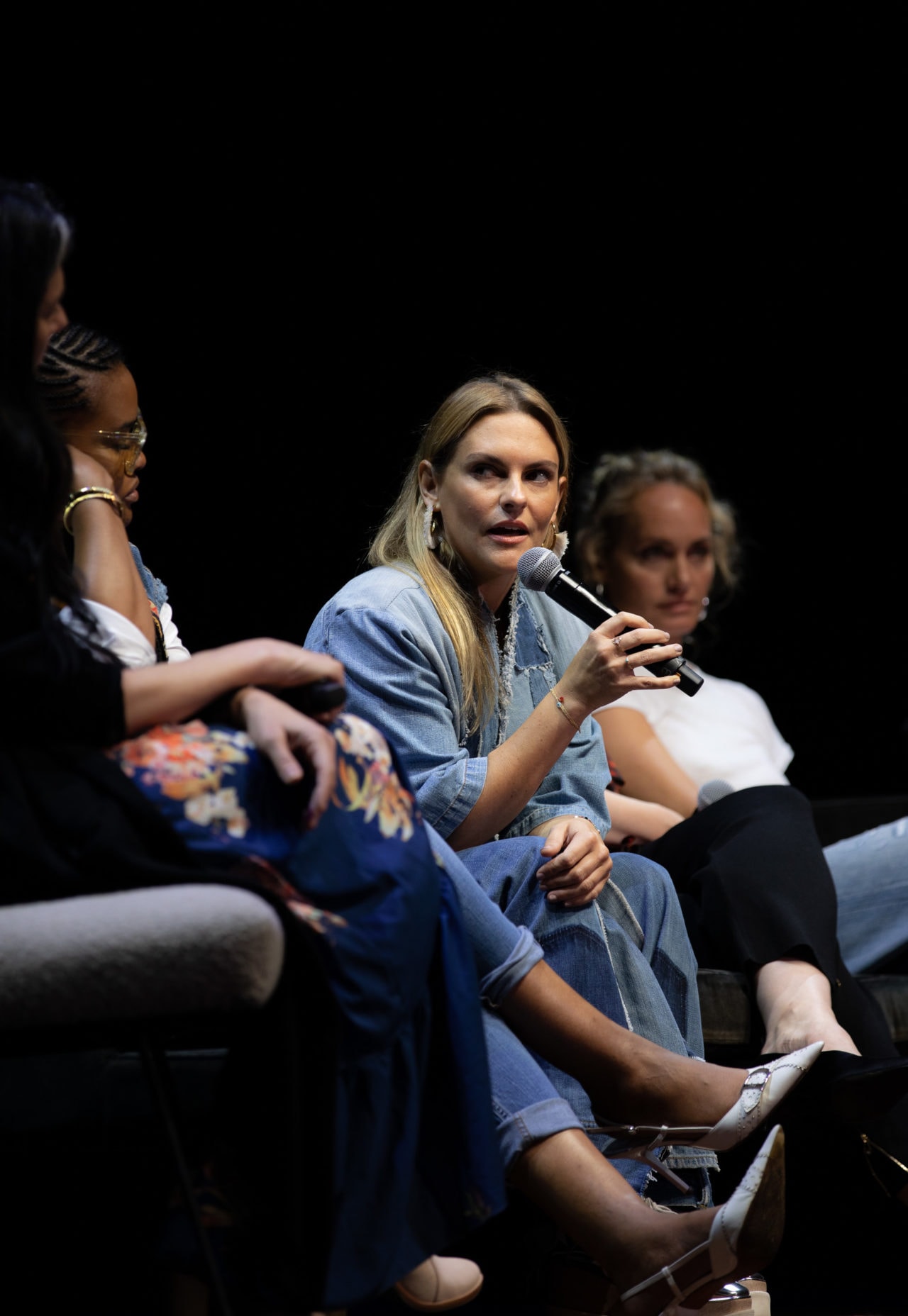
Slow Factory’s The Library Study Hall conference with MIT Media Lab and G-Star RAW held at the ACE Hotel August 26, 2018 in Los Angeles. 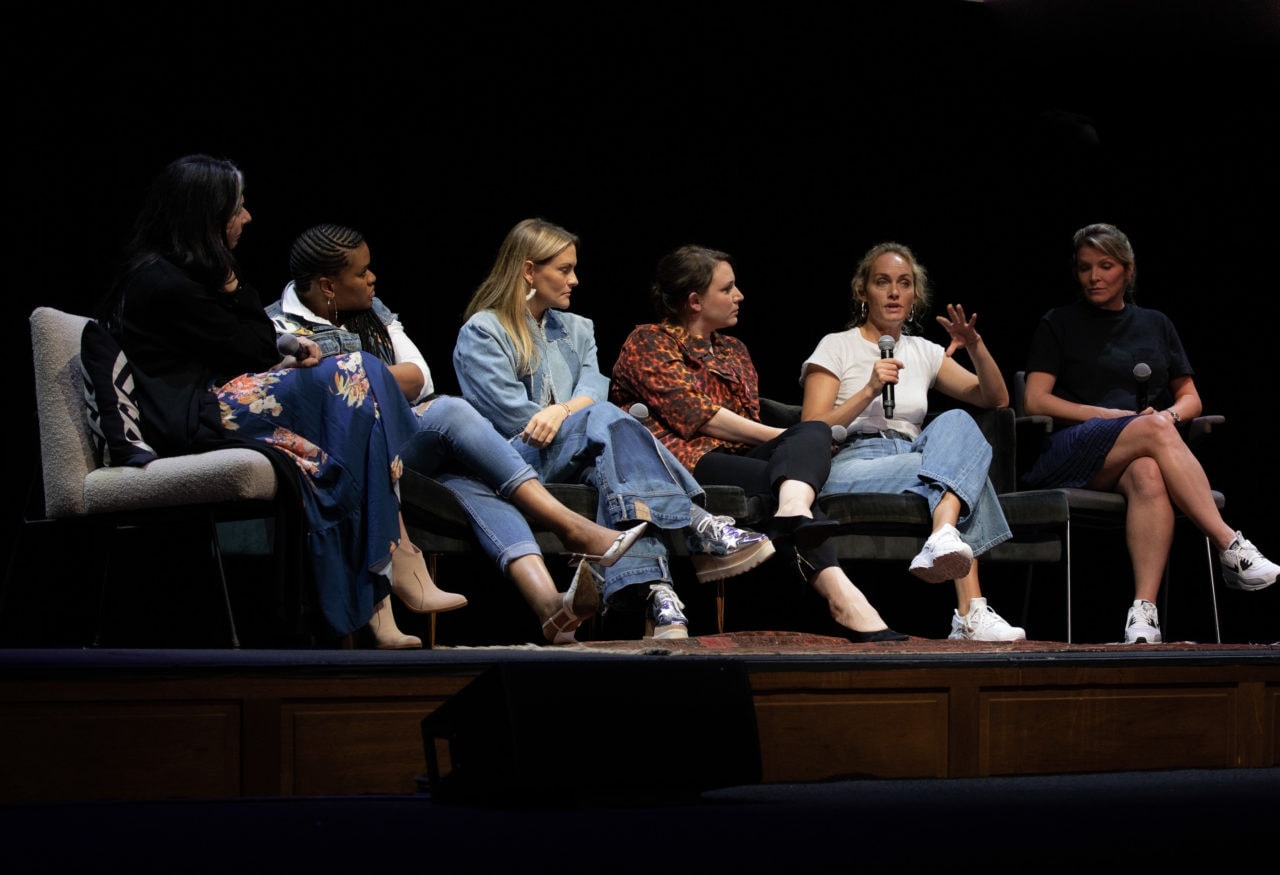
Slow Factory’s The Library Study Hall conference with MIT Media Lab and G-Star RAW held at the ACE Hotel August 26, 2018 in Los Angeles. 
Study Hall, LA. Photo by Justin Lancy
THE KINDCRAFT
Who would you like to see support these events? Brands? Consumers?
Céline Semaan
Fashion is one of the most opaque industries in the world. Opening it up, making it more transparent and accessible, is also making it more accountable. Accountability and responsibility go hand in hand and when we speak of positive impact, we must address the responsibility we have as an industry towards the environment and the people we employ.
I would like to see a way where brands that are interested in sustainability want to engage on a yearly membership in the library so we can advise them on a lot of things and they can also partake in these important conversations.
Information given with a solid context is what we aspire to continue to do. We’ve had an equal amount of industry insiders and savvy consumers genuinely interested in learning more about the state of the industry. At every Study Hall, I hear positive feedback from people outside of our industry who consider themselves fashion-lovers — and most of it starts with “I didn’t know that…”
This interview has been edited for clarity and length.
To Learn More…
